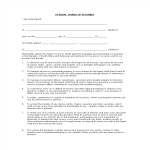Formal Asking Permission Letter
Save, fill-In The Blanks, Print, Done!

Download Formal Asking Permission Letter
Microsoft Word (.docx)Or select the format you want and we convert it for you for free:
Other languages available:
- This Document Has Been Certified by a Professional
- 100% customizable
- This is a digital download (33.92 kB)
- Language: English
- We recommend downloading this file onto your computer.
How to formally request permission from a publisher, IP holder, or original author for printing or distributing his works? Why do we need a formal permission letter? Here you can find an example of a formal permission letter that you can customize to suit your needs. These letters include the necessary contact information and details about the requested permission. Make sure to include any relevant documents or evidence.
A formal permission letter is a written document in which an individual, organization, or authority grants permission or authorization to another party to undertake a specific action, access certain resources, or conduct an activity. These letters are typically used in professional, legal, or official contexts to ensure that permissions are granted and documented in a clear and formal manner.
A formal permission letter typically includes the following elements:
- Date: The date the letter is written.
- Sender's Information: Information about the person or organization granting permission, including name, address, contact details, and any relevant identification or reference numbers.
- Recipient's Information: Details about the person or entity receiving permission, including their name and contact information.
- Salutation: A formal greeting, such as "Dear [Recipient's Name]."
- Statement of Permission: A clear and explicit statement that grants permission for the requested action or activity.
- Description of the Activity: A detailed description of the specific action, event, or project for which permission is being granted.
- Duration and Conditions: Information about the duration of the permission and any conditions or restrictions that apply.
- Signature: The permission letter is typically signed by the authorized party granting permission.
- Enclosures: If there are any supporting documents or attachments, they may be mentioned in the letter.
Formal permission letters are important for legal and ethical reasons, as they ensure that parties have agreed to the terms and conditions of specific activities or actions. They can also serve as evidence in case any disputes or legal issues arise in the future. Depending on the nature of the permission and the legal or regulatory requirements, the letter may need to be notarized or follow specific formats or guidelines.
Download this Formal Asking Permission Letter template now
DISCLAIMER
Nothing on this site shall be considered legal advice and no attorney-client relationship is established.
Leave a Reply. If you have any questions or remarks, feel free to post them below.
Related templates
Latest templates
Latest topics
- GDPR Compliance Templates
What do you need to become GDPR compliant? Are you looking for useful GDPR document templates to make you compliant? All these compliance documents will be available to download instantly... - Google Docs Templates
How to create documents in Google Docs? We provide Google Docs compatible template and these are the reasons why it's useful to work with Google Docs... - IT Security Standards Kit
What are IT Security Standards? Check out our collection of this newly updated IT Security Kit Standard templates, including policies, controls, processes, checklists, procedures and other documents. - Letter Format
How to format a letter? Here is a brief overview of common letter formats and templates in USA and UK and get inspirited immediately! - Google Sheets Templates
How to work with Google Sheets templates? Where to download useful Google Sheets templates? Check out our samples here.
cheese


